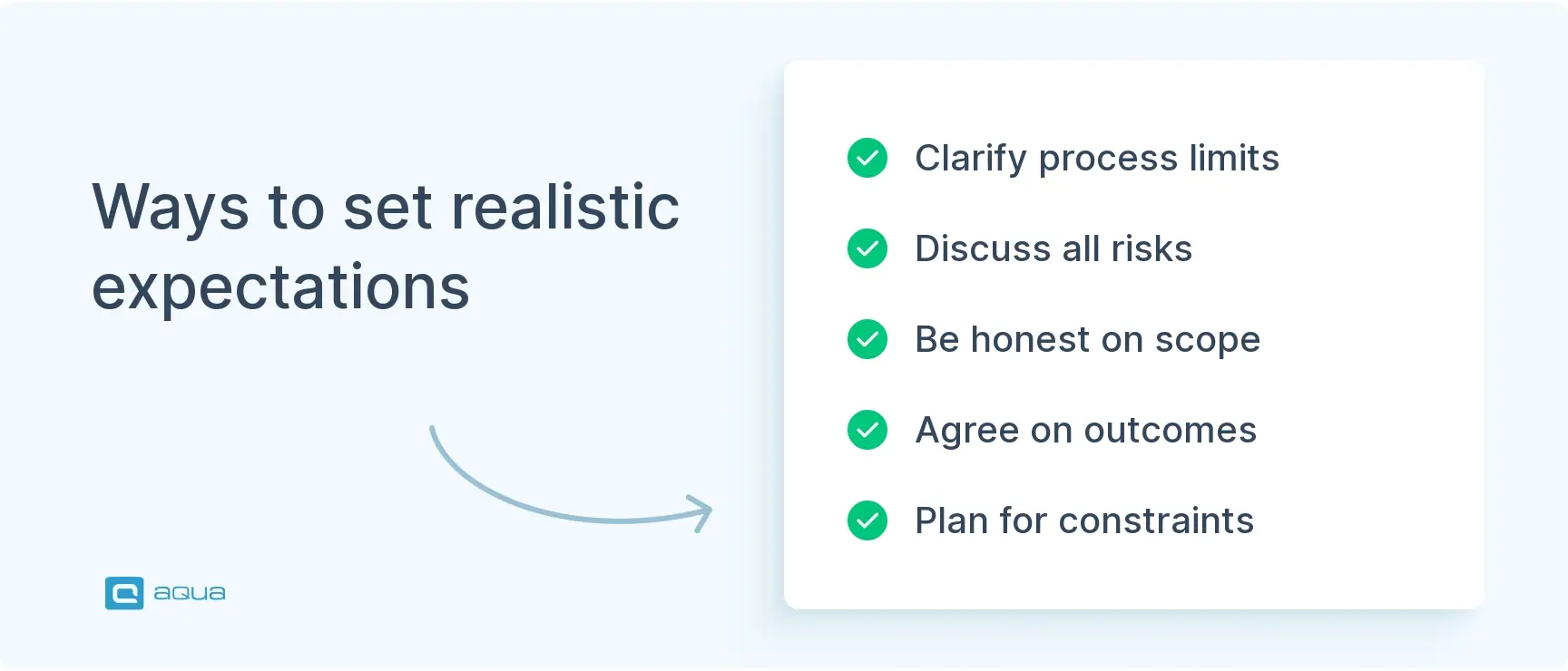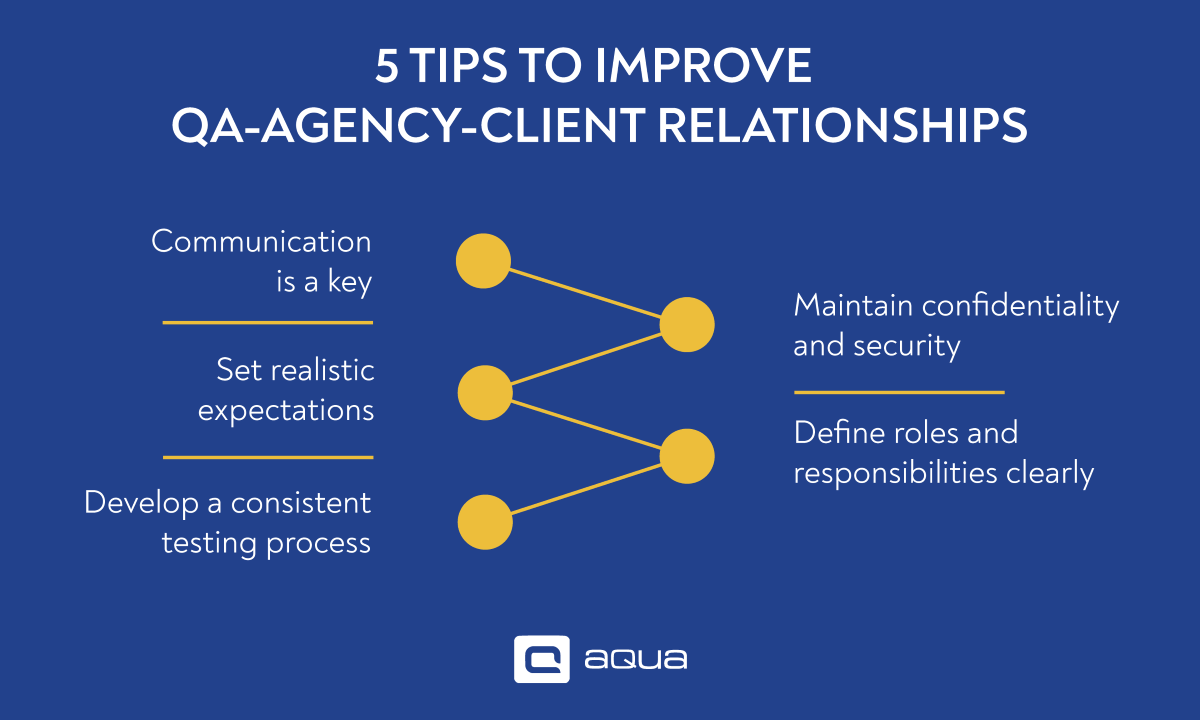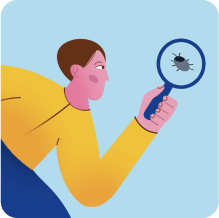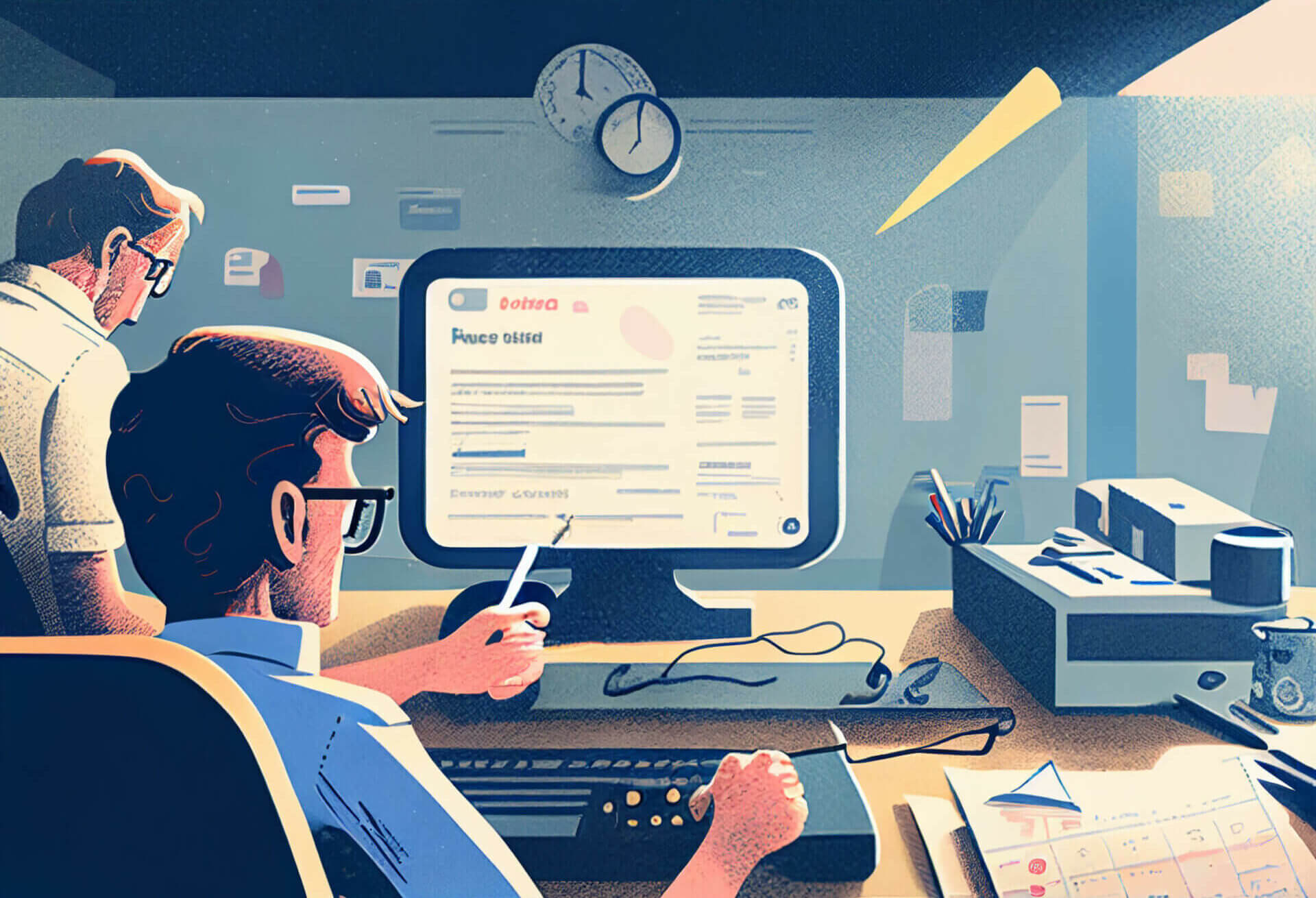It is common to have misunderstandings and problems in the relationships between the QA agencies and the clients. But it should not reach a level of conflict that intervenes with the work and, ultimately, affects the results significantly.
So how to do this? Let’s move on to our advice to help you build a long-lasting bond with your clients, backed up by five rules.
You can delve further into the topic with our latest video.
Rule 1: Communication is key
In any business; for the project’s success, it is vital to have clear and timely communication. Without proper communication, both parties will be unaware of the project’s expectations, resources, and changes. To avoid this common mistake, these are the simple steps to establish strong QA agency and client communication:
- Both the QA agency and the client should know the project’s scope, expectations, timelines, and requirements.
- Communication channels should be established early in the project to avoid misunderstandings later.
- The project manager should establish a regular communication schedule, including weekly meetings to discuss progress and concerns.
- Real transparency means your QA team and clients become problem-solving partners, not just status-update exchangers. Establish a quick-hit communication channel (Slack, Teams, whatever) where critical issues get immediate attention. Agree on what constitutes “critical” upfront, then make reporting these issues as natural as breathing. Your clients will actually thank you for the heads-up, even when it’s bad news.
- Both parties should also be responsive and answer emails and calls in a timely manner.
Effective communication is necessary to build trust, and after it is built, creating a strong QA agency and client relationships becomes much more accessible.
There are some steps QA agencies should take to initiate a high-quality relationship with their clients:
- Clearly define communication and expectations in a written contract that both parties can refer to throughout the project.
- Provide a dedicated communication channel, such as a chat platform, where the client can easily reach out to the QA team and receive timely responses.
- Establish an emergency channel or “SOS” chat for urgent issues that require immediate attention. This channel should have designated team members available 24/7 for urgent issues.
- You’ll want to grab a solid test management tool like aqua cloud. These platforms keep your test cases, bugs, and project milestones visible to everyone in real time. Set up automated status updates that ping both your QA team and clients when key milestones are hit. Start simple, just get your current sprint visible first, then expand from there.
- Schedule regular meetings, such as monthly reporting or weekly check-ins, to review project status, discuss concerns, and provide updates.
Rule 2: Set realistic expectations
Expectations are also significant to the project because it determines satisfaction levels. When expectations are unnecessarily high, even decent work by the QA agency could result in disappointment on the client’s end. Below are the ways you deal with this:
- QA agency should provide the client with a clear understanding of the testing process and its limitations of it.
- The client should know everything about the risks, uncertainties, and roadblocks, like technical difficulties, resource limitations, and time constraints.
- The QA agency should be transparent about what can and can not be achieved within the given timeframe and resources.
- The client should provide enough time and resources to deliver the project of the highest quality.
- Both parties should agree on a clear scope of work with objectives and the project’s desired outcomes.
These steps will help to build transparent QA agency and client communication where the expectations are realistic and the result is evaluated objectively.

Rule 3: Develop a consistent testing process
The quality of the service provided by the QA agency is also crucial in the testing company and client relationships. Consistency in testing processes will boost the overall quality of the work done by the agency and will be crucial to building trust with the client for future projects. Here is how you implement a consistent testing process:
- Have standardised testing procedures that should be communicated to the client. These procedures should be followed for every test to have consistent and reliable results.
- Notify the client about every single change made to the testing process. The client should be able to review and approve these changes.
- Track progress and ensure that testing is done within the established timelines.
- Openly report any issues or bugs identified in the testing to the client.
- Ensure you use up-to-date methods, like using web testing software for automation where you can eliminate repetitive tasks.
- Write down a testing strategy document that outlines the overall testing approach, testing goals, testing scenarios, tools and techniques you will use. Share and review it with the client to ensure everyone is aligned on the testing process.
By following a consistent testing process, the QA agency and the client can ensure the testing is done accurately and efficiently. This helps to establish credibility between the two parties and leads to better QA agency and client relationships.
In addition to implementing a consistent testing process, a secure and fast test management solution will help you streamline your testing processes by saving you time and increasing efficiency. aqua offers automatic test case creation, requirement coverage tracking and integration with many QA tools.
Supercharge your QA process with aqua's AI-powered test management solution today
Rule 4: Maintain confidentiality and security
As businesses increasingly rely on digital solutions and technology to operate, it becomes crucial to ensure the safety and security of sensitive data. Data privacy and security are significant concerns for businesses of any size, so providing the necessary confidentiality will help to build trust between the QA agency and the client. Here is how you build confidentiality and security in QA agency and client relationships:
- The QA agency should have clear policies and procedures to protect sensual data and intellectual property. All employees and stakeholders should know these policies.
- The agency should only use secure communication channels to transfer data. It involves encrypted email services, secure file transfer protocols, or messaging apps.
- The QA agency also should use secure software and tools during the testing. It includes testing servers, bug-reporting tools, virtual machines, and sandboxing tools. All of them should be safe and contribute to a secure testing environment.
- Both parties should review security policies to identify potential vulnerabilities or risks. Regular security audits should be provided by the agency.
These solutions will ensure that security and confidentiality are protected and all sensitive data remain secure during the project. The responsibility primarily falls on the agency’s shoulders.
Rule 5: Define roles and responsibilities clearly
There is no possibility of success where chaos rules, and it is relatable to every business. A clear definition of roles and responsibilities will help to avoid confusion and ensure everyone understands their role in the project. This can be done in simple steps, like the following:
- Define the scope of the testing project
- Specify the deliverables
- Outline specific tasks to be performed by each party

"Your most unhappy customers are your greatest source of learning".
Collaborate on Continuous Quality Alignment
Quality standards shift constantly. Your client’s business grows, customer expectations change, and what worked last quarter might miss the mark today. Set up monthly calibration sessions where you and your client sit down to review recent QA results and compare notes.
Create a simple shared document that tracks rating disagreements and resolution outcomes. When you spot a pattern (like consistently different severity ratings), dig into why that’s happening. Maybe your ‘critical’ is their ‘moderate’, these gaps are fixable once you see them. One thing that catches many teams off guard: bias creep. Without regular check-ins, individual reviewers can drift from the original standards, making feedback inconsistent across the board. Track your alignment percentage each session to double client satisfaction scores.
Rule 6: Stay flexible and adaptive
There should be adaptability and flexibility to build relationships between the QA agency and the client. In a constantly changing landscape, you and your client must be open to adjustments and responsive to changing needs, which shows your willingness to collaborate effectively. Your adaptability ensures smoother navigation through unexpected situations, promoting resilience and strengthening the success of your partnership.
Specifically, it’s essential to maintain an agile mindset. This means being ready to pivot when needed embracing change as an opportunity rather than a setback. Stay proactive by regularly reassessing strategies, processes, and goals. Encourage open discussions about evolving needs and priorities with your client, allowing both parties to adjust plans accordingly. Also, prioritise continuous learning and improvement within your team, fostering a culture that welcomes change and innovation. This proactive approach to flexibility and adaptability will help you navigate uncertainties with agility and resilience, ultimately strengthening your partnership’s success.
Rule 7: Embrace transparency
Transparency is also crucial in nurturing a healthy agency-client relationship. Both parties should openly share information, insights, and challenges. Transparent communication about project progress, setbacks, and changes helps make informed decisions and mitigate misunderstandings. It fosters trust and reinforces the partnership’s integrity.
To master transparency, you need to do the following:
- Ensure both you and your client acknowledge and value each other’s expertise, experiences, and opinions.
- Actively listen and consider different viewpoints, fostering an environment where collaboration thrives.
- Encourage open discussions that embrace diverse perspectives and insights.
- Avoid dismissing ideas outright and seek to understand the reasoning behind differing opinions.
- Demonstrate respect for each other’s contributions to build trust and create a foundation for a successful and harmonious partnership.
Use Real-Time Dashboards and Data-Driven Reporting
Strong QA partnerships thrive on visibility. Nobody wants to wonder what’s happening with their project. Set up real-time dashboards through your test management tools (aqua cloud, Jira, or whatever you’re using) so clients can check bug trends, test progress, and pass rates whenever they want.
Throw in data-driven reports that dig deeper than just bug lists. Show them patterns and what’s actually causing issues. When regression failures spike in a specific module, call it out. Track customer satisfaction and quality scores if you’ve got them. This kind of transparency nearly doubles client confidence, according to recent agency studies. Schedule brief weekly dashboard walkthroughs rather than waiting for clients to ask questions. This approach turns data into strategic conversations.
Conclusion
Initially, it might not be as easy as it sounds to build an effective testing company and client relationship. Learning to work with clients effectively requires commitment and experience.
You will get more experienced with the clients. By learning from your mistakes, establishing proper communication channels, providing feedback and keeping confidentiality, you can build the credibility and trust you need in your business. Remember: a collaborative working environment leads to high-quality testing outcomes and, ultimately, a better end product.
Centralise your testing efforts, collaborate with your team and clients more effectively, and gain valuable insights into your testing process

















